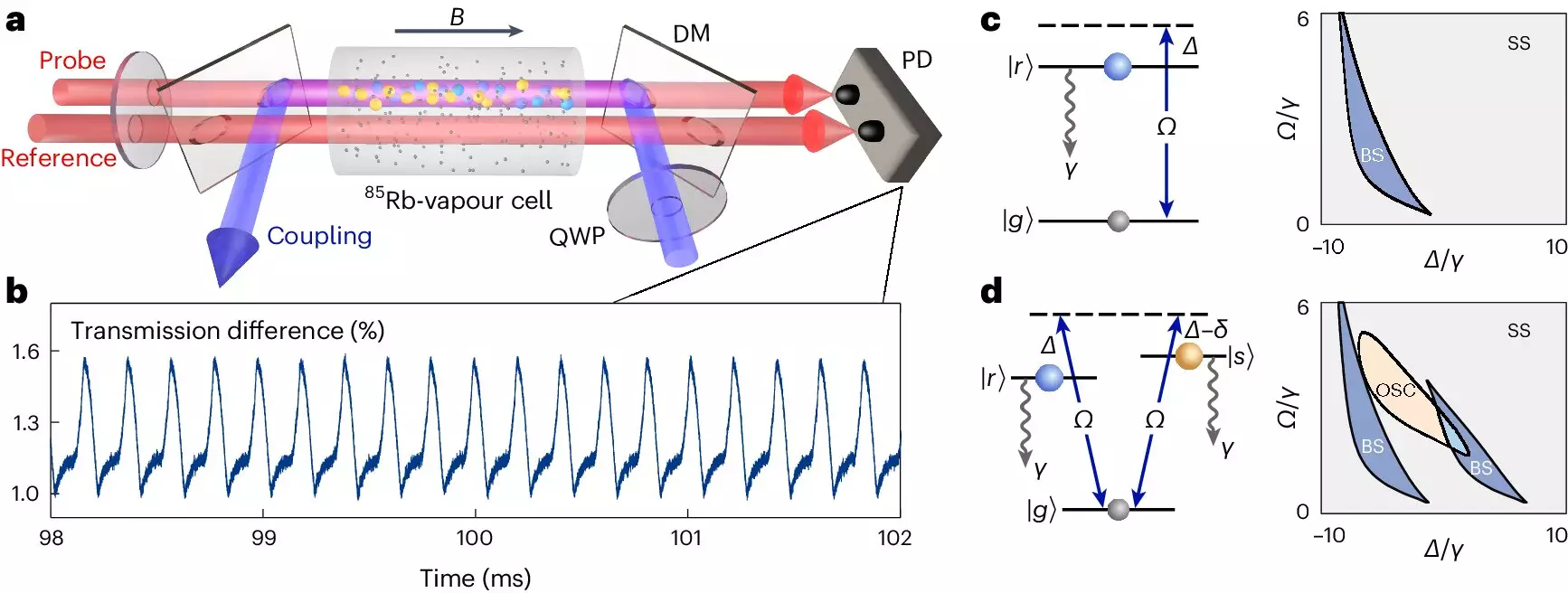Time crystals, a concept proposed by Nobel Prize winner Frank Wilczek in 2012, have been the subject of much controversy within the scientific community. Unlike traditional crystals which repeat in space, time crystals are expected to repeat in time. The question of whether such a phenomenon could exist, and how it could be realized, has sparked interest and debate among researchers.
In a groundbreaking experiment conducted at Tsinghua University in China, with support from TU Wien in Austria, researchers successfully created a unique form of time crystal. By utilizing laser light and manipulating Rydberg atoms with enlarged diameters, the team was able to observe periodic rhythms emerging in the system without any external time constraints. This unprecedented achievement has been documented in the prestigious journal Nature Physics.
The experiment involved shining laser light into a glass container filled with a gas of rubidium atoms. The interaction between the atoms and the laser light led to the spontaneous emergence of oscillations in the intensity of light at the other end of the container. Unlike a ticking clock, where the periodic movement is imposed externally, the time crystal exhibited spontaneous symmetry breaking, with the tick frequency predetermined by the system’s physical properties.
Central to the experiment was the preparation of the atoms in Rydberg states, where the electrons orbit the nucleus in extended paths. This resulted in the creation of Rydberg atoms with significantly larger diameters, leading to stronger interactions between the atoms. By manipulating the laser light to excite two different Rydberg states simultaneously in each atom, a feedback loop was generated, causing oscillations between the atomic states and light absorption.
The discovery of time crystals opens up new possibilities for fundamental research in physics. The self-sustained oscillations observed in the experiment could have applications in sensor technology and other fields. By gaining a deeper understanding of the time crystal phenomenon, researchers hope to shed light on the underlying principles governing the behavior of complex systems.
The creation of a time crystal at Tsinghua University represents a significant milestone in the field of physics. This groundbreaking achievement not only validates Frank Wilczek’s original idea but also paves the way for future exploration of time crystals and their potential applications. The collaboration between research teams from different countries highlights the importance of international cooperation in pushing the boundaries of scientific knowledge.


Leave a Reply